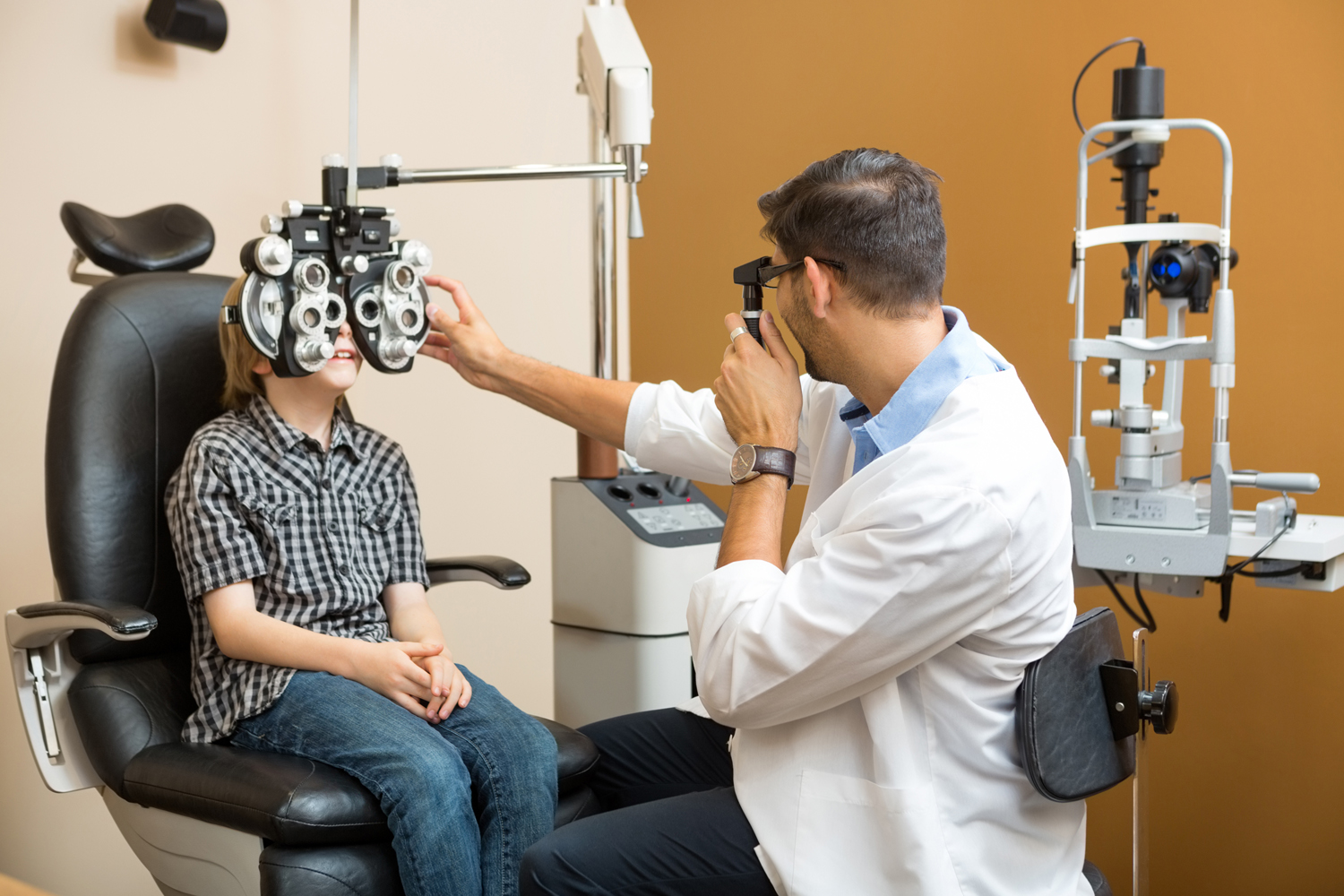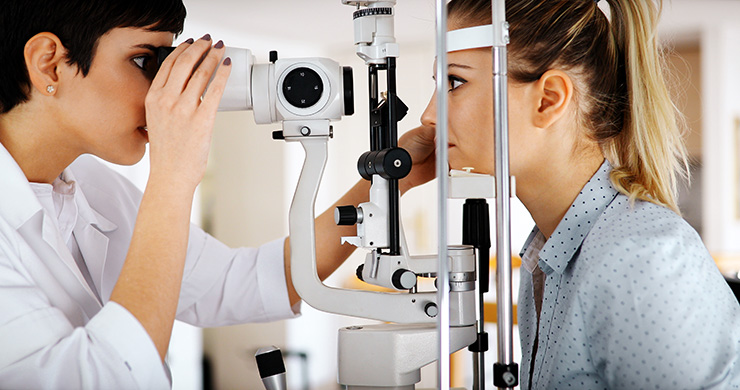How an Eye Doctor Can Transform Your Vision Health in Chino
Exploring the most recent Technological Innovations in Optometry and What They Mean for Optometrists
From the accuracy of Optical Coherence Tomography to the nuanced insights provided by AI-driven analysis devices, these developments are establishing brand-new standards in person evaluation and treatment. As these innovations permeate the practice, optometrists are encountered with the obstacle of welcoming these devices to enhance client results.
Technologies in Diagnostic Tools
Advancing the field of optometry, technologies in analysis tools have changed the means eye care experts analyze and detect aesthetic disabilities and ocular problems. The past years has actually seen significant technical improvements, enabling even more precise and comprehensive evaluations.
One more secret development is the intro of advanced corneal topography systems, which map the surface curvature of the cornea with accuracy. These tools are specifically useful for fitting get in touch with lenses and detecting corneal disorders. Digital retinal imaging has actually changed typical ophthalmoscopy, offering comprehensive, scenic sights of the retina that assist in detailed visual examinations.
The development of wavefront aberrometry has likewise been vital, making it possible for the evaluation of refractive mistakes with unparalleled precision (Eye Doctor). This innovation helps in personalizing restorative lenses and improving medical results for refractive surgical treatments. Jointly, these analysis improvements equip eye doctors to provide exceptional client care, ensuring very early treatment and customized therapy methods, inevitably boosting aesthetic health results
AI in Individual Administration
Structure on the foundation of advanced diagnostic devices, the unification of expert system (AI) in patient management stands for a transformative jump for optometry. AI systems are increasingly employed to boost effectiveness, accuracy, and personalization in patient care. By analyzing substantial amounts of data, AI can recognize patterns and anticipate potential eye conditions, making it possible for optometrists to tailor treatments much more effectively. This capacity is vital in handling chronic eye illness such as glaucoma and diabetic retinopathy, where very early discovery and constant monitoring are crucial.
In addition, AI-driven platforms assist in structured client communications and administrative procedures. Automated organizing, digital consultations, and customized follow-up plans not just improve patient satisfaction however additionally optimize time administration for experts. These systems can triage clients based upon the necessity of their conditions, guaranteeing that those in essential need get punctual focus.
Furthermore, AI enhances decision-making by offering eye doctors with evidence-based referrals and therapy pathways. By integrating data from electronic health and wellness documents, AI devices offer insights that inform medical decisions, lowering the threat of mistakes and boosting person end results. As AI remains to evolve, its role in client administration will likely broaden, reshaping the landscape of optometric care.
Developments in Retinal Imaging
In the world of optometry, retinal imaging has actually witnessed remarkable technological advancements that are enhancing analysis capabilities and client treatment. Developments such as Optical Comprehensibility Tomography (OCT) and fundus digital photography have actually reinvented exactly how optometrists imagine and evaluate the retina. OCT, in particular, provides high-resolution, cross-sectional pictures of the retina, permitting the in-depth assessment of its layers. This capability is important for early discovery and monitoring of problems like glaucoma, diabetic retinopathy, and age-related macular deterioration.
Improved imaging modalities like OCT angiography are additional refining diagnostic accuracy. This non-invasive technique maps blood circulation in the retina, providing essential understandings into vascular health and wellness without the need for color injections. Furthermore, flexible optics innovation is being incorporated into retinal imaging systems to deal with ocular aberrations, supplying extraordinary image clarity. Such developments facilitate the identification of min retinal changes that can signify illness development.
Additionally, improvements in expert system are boosting retinal imaging by making it possible for automated analysis of big datasets. These systems aid eye doctors in identifying patterns a sign of pathology, consequently boosting diagnostic accuracy and efficiency. Collectively, these technologies are changing retinal imaging right into a cornerstone of modern-day eye treatment, boosting end results and increasing therapeutic possibilities.
Teleoptometry's Growing Role
Teleoptometry is increasingly coming to be an essential part of eye care, driven by developments in digital interaction and analysis tools. This is particularly useful in underserved and rural areas where access to specialized eye treatment is commonly limited.
The assimilation of expert system (AI) more improves teleoptometry, enabling the evaluation of visual data and assisting in the detection of ocular problems such as glaucoma and diabetic retinopathy. AI-powered formulas can rapidly translate complex imaging information, providing eye doctors with valuable understandings that bolster scientific decision-making.
Furthermore, teleoptometry sustains continuity of treatment via seamless assimilation with electronic wellness records (EHRs), permitting optometrists to keep comprehensive person backgrounds. This makes certain that clients receive regular and individualized treatment also when speaking with different experts.
In spite of these benefits, obstacles remain, including guaranteeing information security and managing client assumptions. Teleoptometry represents a considerable stride in the direction of even more accessible, efficient, and patient-centered eye care. As technology develops, its function is poised to increase additionally.

Future Patterns in Eye Care
A myriad Check Out Your URL of ingenious trends is readied to reshape the future of eye care, driven by technical innovations and the developing requirements of individuals. One considerable pattern is the combination of artificial intelligence (AI) in diagnostics, which guarantees to enhance the accuracy and performance of eye assessments. AI algorithms can evaluate large amounts of information from retinal pictures, potentially spotting problems like diabetic person retinopathy and glaucoma earlier than conventional methods.
In addition, you could look here personalized medication is getting traction in optometry, with hereditary testing informing customized therapy plans. This approach intends to optimize person results by tailoring treatments to private hereditary accounts. Wearable technology, such as clever contact lenses, is additionally coming up, offering real-time surveillance of intraocular pressure or sugar levels, hence supplying continuous understandings right into systemic and eye health and wellness.
The fostering of augmented fact (AR) and virtual truth (VR) in training and individual education and learning is one more arising trend. These modern technologies offer immersive experiences that can boost understanding and skills both for clients and eye doctors. As these trends progress, optometrists have to stay abreast of technological developments to supply sophisticated care, making sure better patient results and complete satisfaction in the vibrant landscape of eye treatment.
Verdict

Jointly, these analysis developments empower eye doctors to provide superior person treatment, making sure early treatment and tailored therapy methods, ultimately boosting visual wellness outcomes.

As these modern technologies continue to develop, optometrists need to adjust and incorporate them into method, eventually maximizing workflow efficiency and raising the requirement of eye treatment delivered to clients.